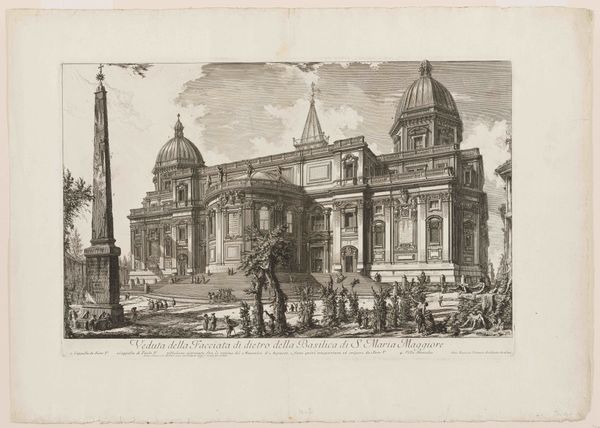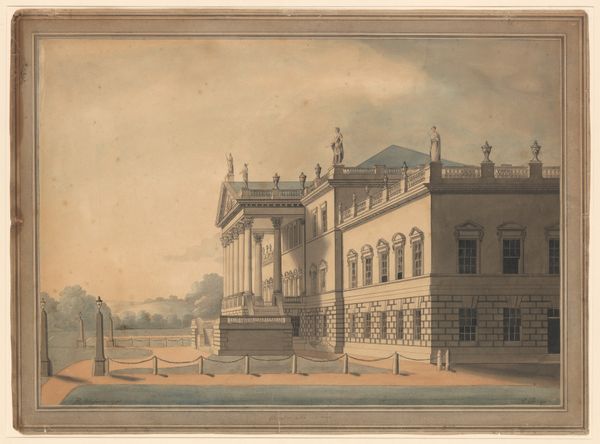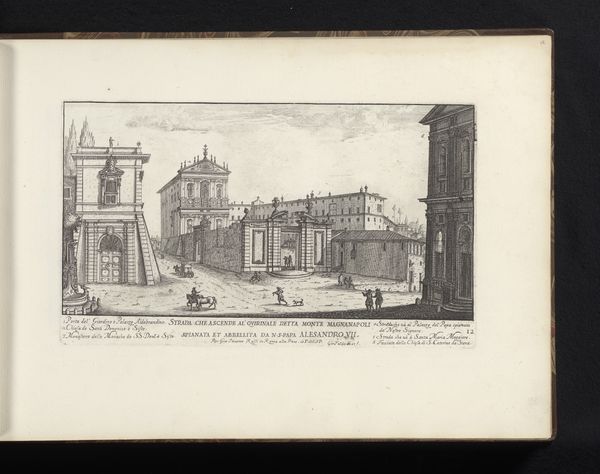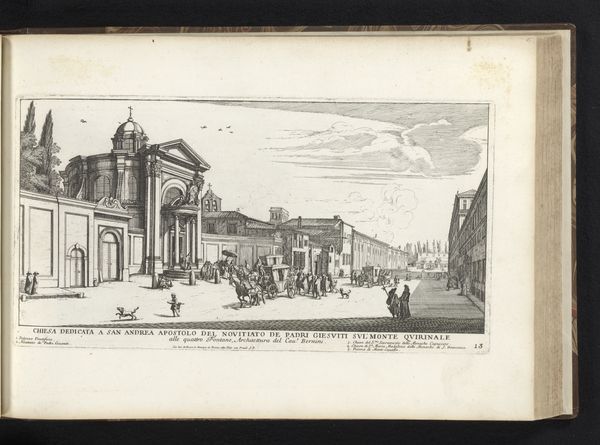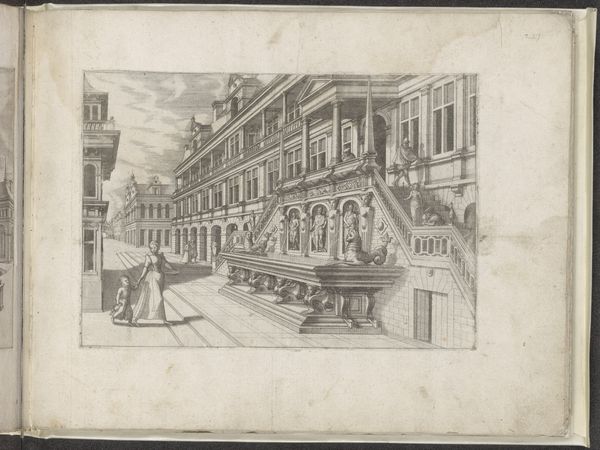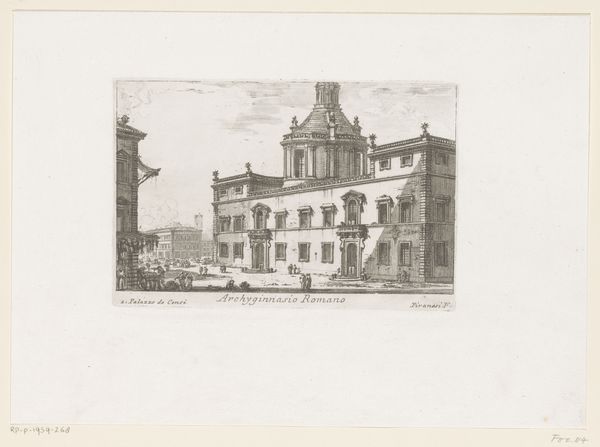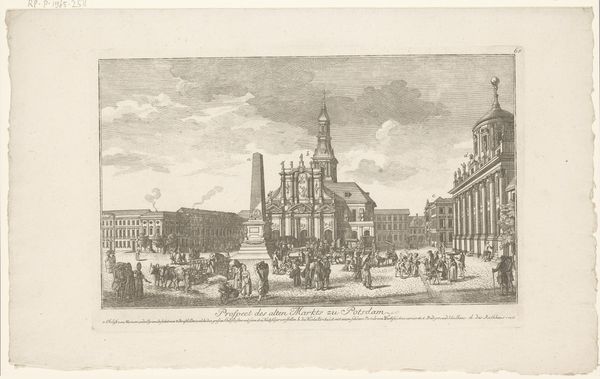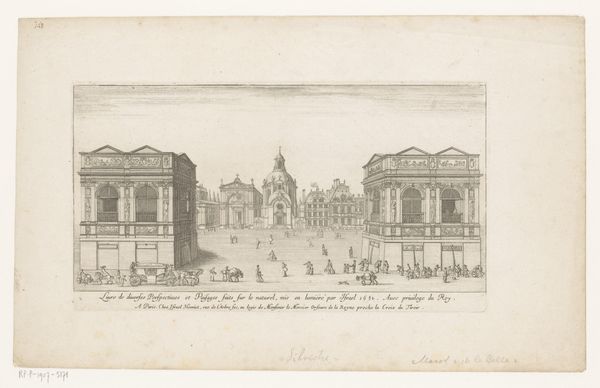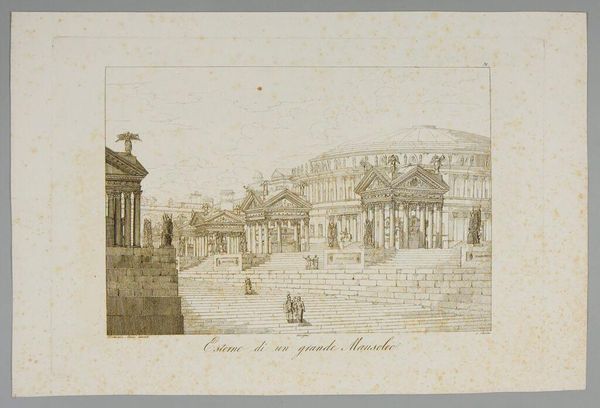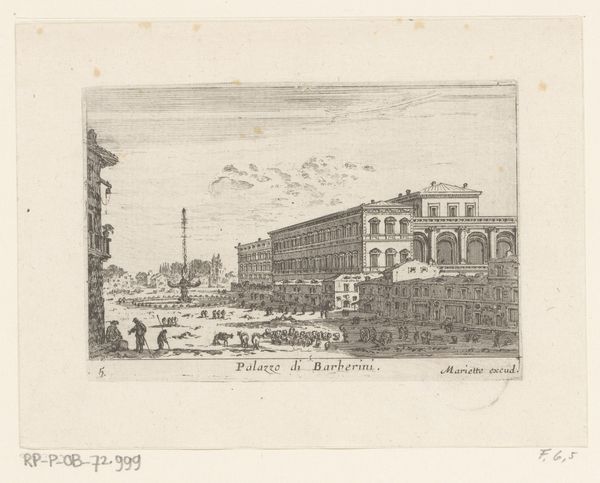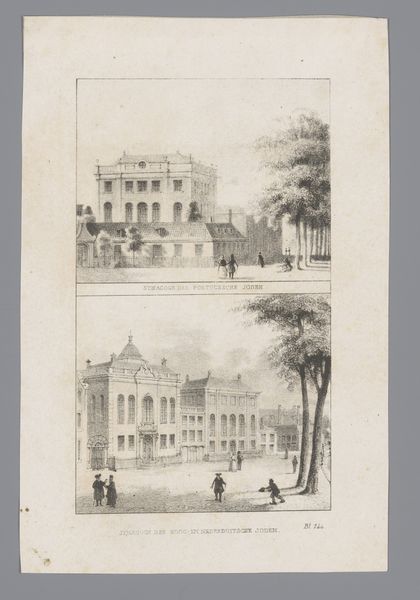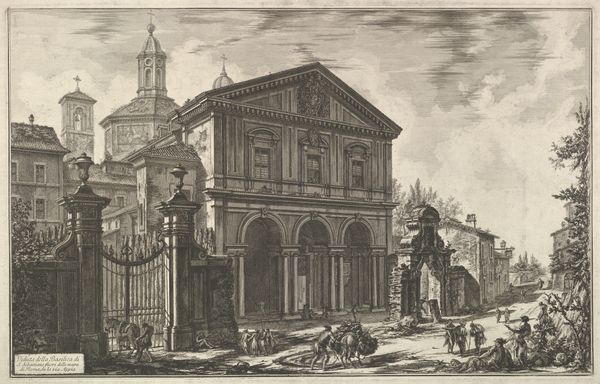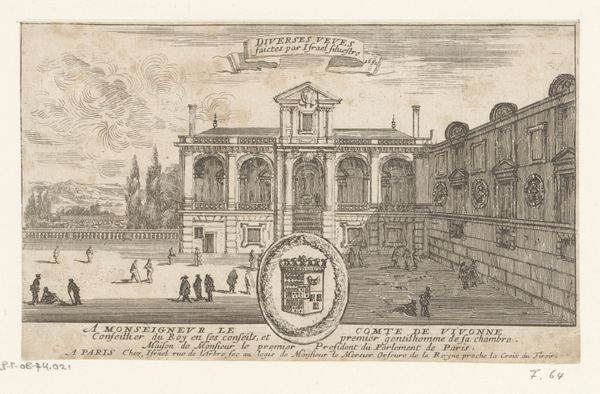
drawing, print, etching, architecture
#
drawing
#
neoclacissism
# print
#
etching
#
landscape
#
architecture
Dimensions: Sheet: 3 1/2 × 4 3/16 in. (8.9 × 10.6 cm)
Copyright: Public Domain
Editor: Here we have Luc Vincent Thiery de Sainte Colombe's "An Architectural Capriccio" from 1772, done as an etching. It reminds me of Piranesi, but somehow feels more staged, almost like a theatre set. How do you interpret the political or social context behind this constructed scene? Curator: Precisely! Consider the term "capriccio." It’s not just a whimsical landscape; it's a commentary on power. Look at the precise architectural rendering mixed with seemingly random placement. This reflects the Enlightenment's fascination with order, yet it reveals a tension, because order and power are only constructions. Do you see how the figures are dwarfed by the architecture? Editor: Yes, they are really diminished, almost like extras on that stage you mentioned. So, is the statement about the individual’s place in a larger societal structure? Curator: Exactly. Neoclassicism, the artistic movement to which this work belongs, often evoked Roman ideals of citizenship and civic virtue. Yet, by emphasizing imposing architecture, Thiery also indirectly reveals the controlling nature of institutions, especially the state. It implies that this grandeur might serve not liberty, but oppression, influencing public opinion. Notice the carefully placed obelisk -- it refers back to an earlier world order while claiming that is natural order Editor: It is almost like the grandeur is critiquing itself! I hadn't thought about the composition suggesting an agenda being imposed. Curator: These architectural prints were, in essence, propaganda distributed amongst an increasingly literate population. We must always look at art through the lens of public role of the artist. We tend to consume artworks as if they are isolated aesthetic statements rather than powerful pieces of a conversation through history. Editor: I see. Thanks! It's helpful to think about the distribution and reception of these images in shaping the political landscape. Curator: Indeed! Art is always interwoven with society's threads.
Comments
No comments
Be the first to comment and join the conversation on the ultimate creative platform.

